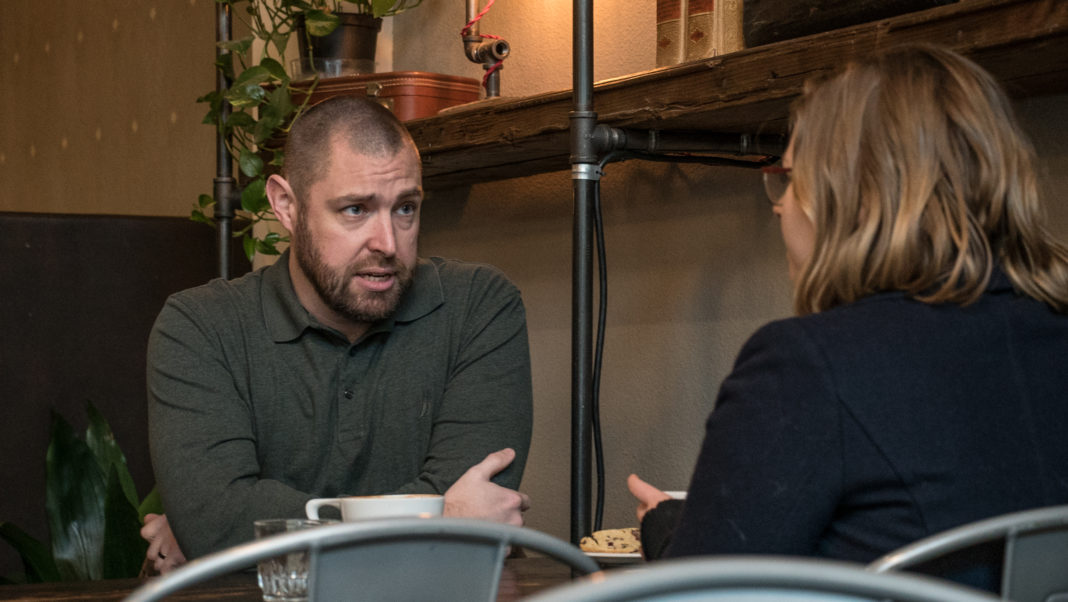Reconstructing recreation
Intramural sports have long been an integral part of student life at Portland State University. This year, the campus recreation department hopes to present a restructured program that demonstrates vast improvement from the way intramurals have been run and structured in the past.
The intramurals program is under new leadership this year, as senior Sam Kavehrad steps in as the new head coordinator. Kavehrad boasts an impressive resume, having spent last year working in the front office of the Portland Trail Blazers. As an intern, he worked alongside general manager John Nash and President Steve Patterson. He brings major league experience to a program that, in his opinion, has been underachieving.
Kavehrad recognized several weaknesses in the program last year while participating in the school’s intramural leagues. This year, he looks to fix those problems.
”As an outsider, I looked back on intramurals and felt it wasn’t meeting its potential,” Kavehrad said.
During the summer, he set out to restructure the intramurals program. Citing a lack of organization and marketing, the program has been “rebuilt from scratch,” as Kavehrad put it. The intramurals department examined what went well and what failed in previous years, and also looked outside of Portland State for inspiration.
”We’ve spent time researching other schools and how they run their intramural programs,” Kavehrad said.
After this assessment, changes have been put into place. This year, leagues will have a new format. The intramurals website will serve its users better, and a new marketing campaign has been developed to draw more people to the events.
In the past, some leagues lacked concrete, consistent schedules each week. This year, schedules will be set in stone and made easily available on the intramurals website, which is using a new computer program to manage its leagues. Consistency among teams showing up every week has also been a problem from year to year. Mandatory captains’ meetings will now be held to ensure teams remain accountable and focused throughout the season.
Intramural leagues this year will be under a new format. The first one or two weeks of the event will be preseason practice games called “kick-off nights.” On these nights, teams will still be in the process of being formed and rosters will take shape. Teams may add “free agent” players from among those who have yet to find a team. The season, which will be tracked in the standings online, will be five weeks long. The following week at the end of the season will be the league’s playoffs.
Campus recreation offers a wide variety of intramural sports for the fall term, including competitive and recreational soccer, basketball, volleyball and flag football. In addition to the different leagues, there will be special events, such as tournaments, held throughout the term. Drop-in times will also be available for non-league pick-up games.
Those interested in participating in an intramural league may sign up by attending the first meeting of a given sport. Players may join the league by signing up as part of a team, or wait to get picked up by teams seeking players. They may also be placed on a team composed of free agents. The league is first come, first serve, and there is a limited number of players and teams that the league can accommodate. The fee for a single team is $40 for the entire season, which is very affordable compared to most non-school-affiliated recreational league prices.
In addition to the affordability, Kavehrad offers another reason to participate in the leagues. “Intramurals is a great way for students to get socially involved at PSU. It’s the best opportunity at the school to get people connected,” he said.
Kavehrad pointed out that Portland State, being in such an urban setting, has a more difficult time getting participation than schools in an isolated college town.
”Dealing with a lot of commuters, who are also demographically older, it’s more challenging getting people connected,” he added.
To overcome such challenges, the campus recreation department will use a strong marketing campaign, something Kavehrad said had not been utilized in the past. This year, new logos and new strategies should attract a wide array of participants. Besides the conventional use of fliers and posters, campus recreation promoters have been present at student orientations and other events so far this year.
While the marketing strategy is comprehensive, the benefits that the intramurals program provides seem apparent enough to sell itself.
”We hope to provide students with a positive experience through sports leagues, tournaments and special events,” Kavehrad said.



